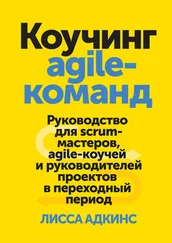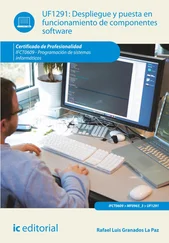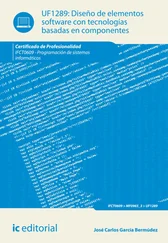Similar problems are likely to arise even when a program is kept continuously alive by an evolving team of programmers, as a result of the differences of competence and background experience of the individual programmers, particularly as the team is being kept operational by inevitable replacements of the individual members.
Method and Theory Building
Recent years have seen much interest in programming methods. In the present section some comments will be made on the relation between the Theory Building View and the notions behind programming methods.
To begin with, what is a programming method? This is not always made clear, even by authors who recommend a particular method. Here a programming method will be taken to be a set of work rules for programmers, telling what kind of things the programmers should do, in what order, which notations or languages to use, and what kinds of documents to produce at various stages.
In comparing this notion of method with the Theory Building View of programming, the most important issue is that of actions or operations and their ordering. A method implies a claim that program development can and should proceed as a sequence of actions of certain kinds, each action leading to a particular kind of documented result. In building the theory there can be no particular sequence of actions, for the reason that a theory held by a person has no inherent division into parts and no inherent ordering. Rather, the person possessing a theory will be able to produce presentations of various sorts on the basis of it, in response to questions or demands.
As to the use of particular kinds of notation or formalization, again this can only be a secondary issue since the primary item, the theory, is not, and cannot be, expressed, and so no question of the form of its expression arises.
It follows that on the Theory Building View, for the primary activity of programming there can be no right method.
This conclusion may seem to conflict with established opinion, in several ways, and might thus be taken to be an argument against the Theory Building View. Two such apparent contradictions shall be taken up here, the first relating to the importance of method in pursuit of science, the second concerning the success of methods as actually used in software development.
The first argument is that software development should be based on scientific manners, and so should employ procedures similar to scientific methods. The flaw of this argument is the assumption that there is such a thing as scientific method and that it is helpful to scientists. This question has been the subject of much debate in recent years, and the conclusion of such authors as Feyerabend [1978], taking his illustrations from the history of physics, and Medawar [1982], arguing as a biologist, is that the notion of scientific method as a set of guidelines for the practising scientist is mistaken.
This conclusion is not contradicted by such work as that of Polya [1954, 1957] on problem solving. This work takes its illustrations from the field of mathematics and leads to insight which is also highly relevant to programming. However, it cannot be claimed to present a method on which to proceed. Rather, it is a collection of suggestions aiming at stimulating the mental activity of the problem solver, by pointing out different modes of work that may be applied in sequence.
The second argument that may seem to contradict the dismissal of method of the Theory Building View is that the use of particular methods has been successful, according to published reports. To this argument it may be answered that a methodically satisfactory study of the efficacy of programming methods so far never seems to have been made. Such a study would have to employ the well established technique of controlled experiments (cf. [Brooks, 1980] or [Moher and Schneider, 1982]). The lack of such studies is explainable partly by the high cost that would undoubtedly be incurred in such investigations if the results were to be significant, partly by the problems of establishing in an operational fashion the concepts underlying what is called methods in the field of program development. Most published reports on such methods merely describe and recommend certain techniques and procedures, without establishing their usefulness or efficacy in any systematic way. An elaborate study of five different methods by C. Floyd and several co-workers [Floyd, 1984] concludes that the notion of methods as systems or rules that in an arbitrary context and mechanically will lead to good solutions is an illusion. What remains is the effect of methods in the education of programmers. This conclusion is entirely compatible with the Theory Building View of programming. Indeed, on this view the quality of the theory built by the programmer will depend to a large extent on the programmer's familiarity with model solutions of typical problems, with techniques of description and verification, and with principles of structuring systems consisting of many parts in complicated iterations. Thus many of the items of concern of methods are relevant to theory building. Where the Theory Building View departs from that of the methodologists is on the question of which techniques to use and in what order. On the Theory Building View this must remain entirely a matter for the programmer to decide, taking into account the actual problem to be solved.
Programmers' Status and the Theory Building View
The areas where the consequences of the Theory Building View contrast most strikingly with those of the more prevalent current views are those of the programmers' personal contribution to the activity and of the programmers' proper status.
The contrast between the Theory Building View and the more prevalent view of the programmers' personal contribution is apparent in much of the common discussion of programming. As just one example, consider the study of modifiability of large software systems by Oskarsson [1982]. This study gives extensive information on a considerable number of modifications in one release of a large commercial system. The description covers the background, substance, and implementation, of each modification, with particular attention to the manner in which the program changes are confined to particular program modules. However, there is no suggestion whatsoever that the implementation of the modifications might depend on the background of the 500 programmers employed on the project, such as the length of time they have been working on it, and there is no indication of the manner in which the design decisions are distributed among the 500 programmers. Even so the significance of an underlying theory is admitted indirectly in statement such as that 'decisions were implemented in the wrong block' and in a reference to 'a philosophy of AXE'. However, by the manner in which the study is conducted these admissions can only remain isolated indications.
More generally, much current discussion of programming seems to assume that programming is similar to industrial production, a component that has to be controlled by rules of procedure and which can be replaced easily. Another related view is that human beings perform best if they act like machines, by following rules, with a consequent stress on formal modes of expression, which make it possible to formulate certain arguments in terms of rules of formal manipulation. Such views agree well with the notion, seemingly common among persons working with computers, that the human mind works like a computer. At the level of industrial management these views support treating programmers as workers of fairly low responsibility, and only brief education.
On the Theory Building View the primary result of the programming activity is the theory held by the programmers. Since this theory by its very nature is part of the mental possession of each programmer, it follows that the notion of the programmer as an easily replaceable component in the program production activity has to be abandoned. Instead the programmer must be regarded a responsible developer and manger of the activity in which the computer is a part. In order to fill this position he or she must be given a permanent position, of a status similar to that of other professionals, such as engineers and lawyers, whose active contributions as employers of enterprises rest on their intellectual proficiency.
Читать дальше










